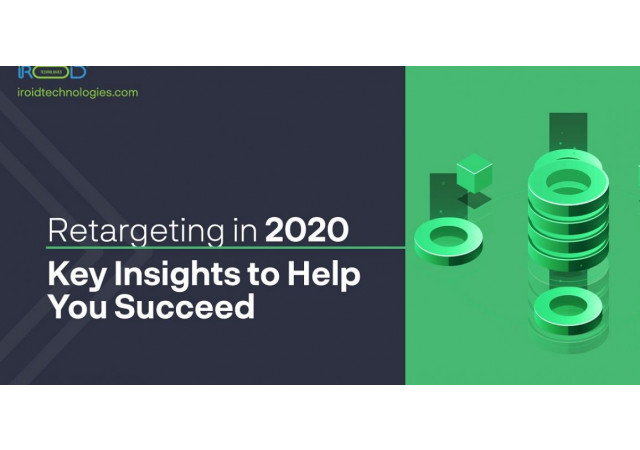Re-targeting in 2020: Key Insights to Help You Succeed

Re-targeting permits you to mention the customers of your products and services after they leave your website without purchasing. It allows you to show your visitors with relevant ads when they visit other sites. Re-targeting in Google Ads works with apps and website banner ads. Serious marketers now use re-targeting as a necessary tool to relate with their customers and grow their sales. Re-targeting in 2020 works by keeping a record of people who visit your site and promoting your re-targeting ads to them as they visit another site online.
WHY IS RETARGETING IMPORTANT?
It would be excellent if customers regularly bought on the first visit to your site. Unluckily, that’s not how it works. That’s where Re-targeting becomes important. Re-targeting helps suggest someone of your product as they proceed to browse the internet, whether they’re on social media, their favorite news site or even researching your opponents.
You can choose from a medley of ways to segment people based on their characteristics or performance and target them respectively, which allows you to create a relevant advertising encounter that drives more purchases. No matter which section you’re choosing, you’re targeting a group of people who have already designated that they’re interested in your brand solely by visiting your site.
WHY IS RE-TARGETING IN 2020 SO EFFECTIVE?
Retargeting provides greater online sales by holding your brand front and center and bringing “window shoppers” when they’re eager to purchase. Every time your customer views your retargeting ads, your brand gains attraction, and more attention. The leading click-through rates and increased conversions that are common with retargeting campaigns emphasize the value of good branding and repeated exposure.
WHAT IS THE DIFFERENCE BETWEEN “REMARKETING” AND “RETARGETING?
The terms “re-marketing” and “re-targeting” are often used conversely, but they are not entirely identical.
Retargeting: The term “retargeting” is frequently used when you are convincing your prospects of your ads on other sites in an ad network after they abandon your site. Retargeting normally requires “cookies”.
Remarketing: The term “remarketing” is regularly used when you accumulate contact information from prospects to deliver email campaigns to them.
HOW DOES RE-TARGETING IN 2020 WORK?
Re-targeting in 2020 works by employing “cookies”, a small piece of data stored by the Web browser that identifies users who attended your advertisement or web page. Marketing teams can then use this cookie data to serve ads to the users repeatedly. By showing relevant, targeted ads to users that have shown curiosity in your brand, you improve brand awareness and often total conversions.
WHAT IS BEHAVIORAL AND CONTEXTUAL TARGETING?
Both Behavioral and Contextual targeting are methods of targeted advertising.
With Behavioral targeting, advertisers set their target audience based on things that the customers took. Retargeting is a standard form of Behavioral targeting because it targets somebody who visited a webpage. For example, after someone visited a particular product page, the person is later subserved with a display ad on different sites for the related product he or she viewed.
With Contextual targeting, advertisers limit their target audience based on the relevance of content on the opposite sites. While Contextual targeting can be applied to Retargeting, advertisers often use it to enlarge their influence on prospects who visit sites that highlight content related to the advertiser’s website.
Behavioral and Contextual are 2 of numerous sophisticated audiences targeting choices AdRoll gives.
HOW DO I CREATE A RETARGETING CAMPAIGN?
You can quickly create retargeting campaigns utilizing AdRoll. Retargeting is one of the various explanations AdRoll offers to help you convert visitors into customers. With AdRoll, you can build and maintain your retargeting campaigns across over 500 advertising partners and exchanges with efficiency.
FEW RETARGETING BEST PRACTICES
- Retargeting is most useful if you segment your visitors (e.g., people who looked at shoes vs. pants) and tailor the retargeting ads displayed to each group, or you can choose not to retarget them at all (e.g., people who converted).
- The best-performing retargeting has a clear call-to-action and advances an offer.
- Different products guarantee, unlike retargeting time windows. For example, people shopping for travel should be retargeted quickly; people shopping for luxury goods should be retargeted next.

